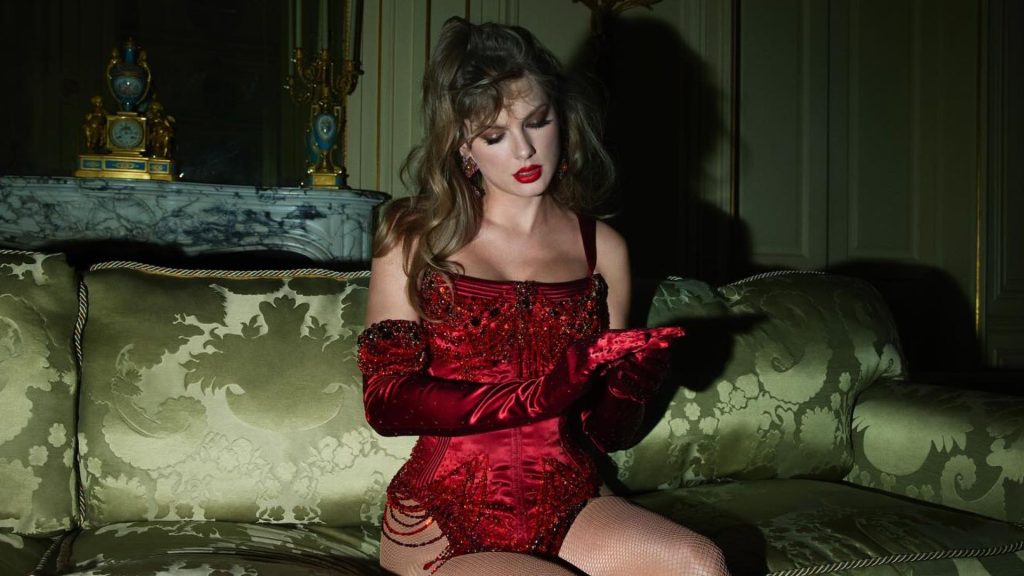“Love it,” Taylor Swift says on the set of “The Fate of Ophelia”‘s kaleidoscopic music video, playing in theaters now as part of the rollout for The Life of a Showgirl, her twelfth album. She’s watching a playback of a bit of choreography—and, unbeknownst to her, sharing her thesis for the era’s crystal-coated aesthetic. “Can I do one more to beat it?”
In the video, Swift transforms into different showgirls—or rather, performers—from throughout the ages: the model who depicts Ophelia in Sir John Everett Millais’s 1851 painting of the drowning noblewoman, wearing a white linen gown and a flowing blonde wig; a dancer at the center of a Busby Berkeley routine, complete with a shimmering, customized Area bodysuit and pailette swim cap; a cabaret star in a broken-mirror dress; a Sarah J. Maas-esque heroine at sea in a silver Paolo Sebastian gown. Finally, she appears as Taylor Swift of the 2020s: Kelsey Randall crystalline naked dress, shaggy fur jacket, catching a football at a raucous concert after-party.
This sequence comes in at just under four minutes, but it captures the same marathon energy of Swift’s 149-stop Eras Tour in its swirl of quick-changes and fast-motion evolution. Those shows, which cover her entire career and discography, were the inspiration for this album. While the lyrics of The Life of a Showgirl go, as Swift has said in interviews, “behind the curtain,” the outfits she’s wearing in the accompanying visuals are all about center-stage showgirls with a wealth of theatrical history. And the level of care behind each costume shows just how dedicated she remains to hitting her marks—and earning the audience’s applause.
Taylor Swift wearing an Annie’s Ibiza mini dress and Lorraine Schwartz earrings.
(Image credit: Mert Alas and Marcus Piggott)
Swift and her longtime stylist, Joseph Cassell Falconer, clearly did their homework for The Life of a Showgirl. The visuals have trickled out on Instagram and through vinyl variants, in addition to the “Ophelia” music video. In them, we see cinched-tight corsets by Annie’s Ibiza, The Blonds, and Guilds of Hands, referencing late-night cabaret performers. The majority of crystal-covered looks are by Bob Mackie, the designer responsible for dressing pop legends (Cher, Tina Turner, Madonna) and rising stars (Sabrina Carpenter, Zendaya)—specifically, his work for Jubilee!, the longest-running Las Vegas showgirl revue.
The set Swift wears to play a Vegas Strip dancer toward the end of her “Ophelia” video, is pulled from that production archive. Jubilee! was a project of gargantuan scale: Reportedly, dressing the hundreds-strong cast led to a global shortage in Swarovski crystals.
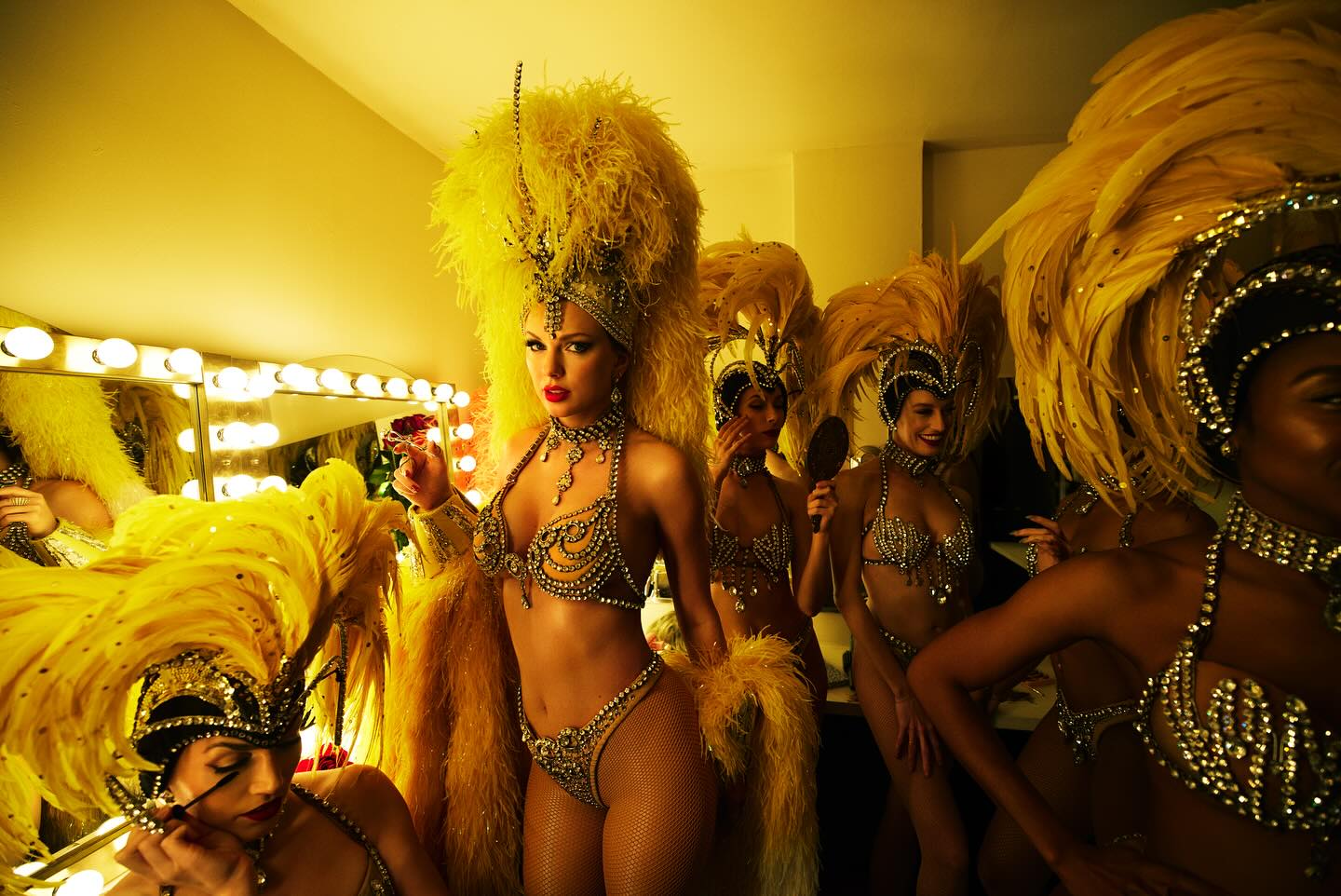
Taylor Swift wearing vintage Bob Mackie.
(Image credit: Mert Alas and Marcus Piggott)
The dancers in Jubilee! had to move with precision and grace, not taking a step out of line for the entire, shimmering picture they made for their audiences. This type of theater is nearly extinct, as changing cultural tides have sent traditional showgirl performances packing. (Jubilee! closed in 2016.)
As Swift is contemplating her place in the pop pantheon following her retrospective tour—one that’s simply hard to beat in terms of $2 billion-plus in ticket sales and near-daily, breathless nostalgia spawned by her earlier great hits—you can understand how she might empathize with performers who used to draw crowds but are now a fading memory. “You’re only as hot as your last hit, baby,” she sings. When she dresses in the style of these showgirls, though, she’s hoping to replicate their all-out commitment to their craft—not the curtain coming down.
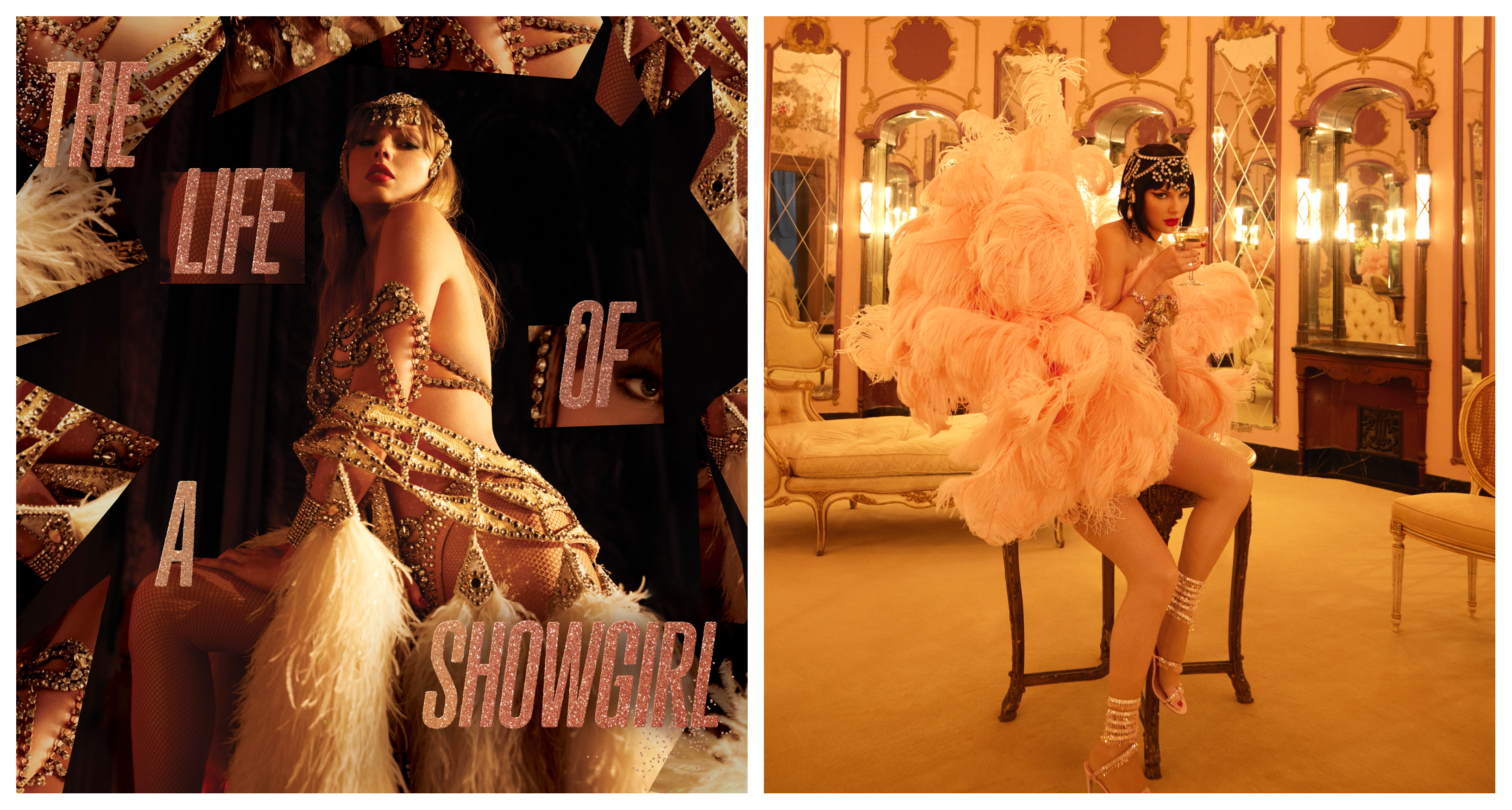
Left: One of several The Life of a Showgirl covers where Taylor Swift wears vintage Bob Mackie. Right: Swift wearing The Blonds.
(Image credit: Mert Alas and Marcus Piggott)
In her announcement post for the album, Swift also described The Life of a Showgirl as a “self portrait.” The designers she’s worn so far—and the ones she name-checked on the album—embody an always-on energy. Area, the label behind her crystalline bodysuit on the album cover, often dresses stars for events like the VMAs; The Blonds, is similarly associated with flashy fashion shows and after-parties.
In one of her only shots out of stage-ready gear, she dons a burnt-orange pailette dress by Gucci, a brand that earns a shout-out on “CANCELLED!” and that she’s worn many times before, both in her street style and during past album cycles. Then and now, it works as a shorthand for what she wears when she knows she’s being watched, to really make you look.
And, as always, some looks seem chosen for their Easter egg potential. See: a crystal-laden corset from The Blonds’ 2023 collection, which was inspired by the actress Elizabeth Taylor, matching the title of the album’s second track, examining the trappings of ill-fated fame.
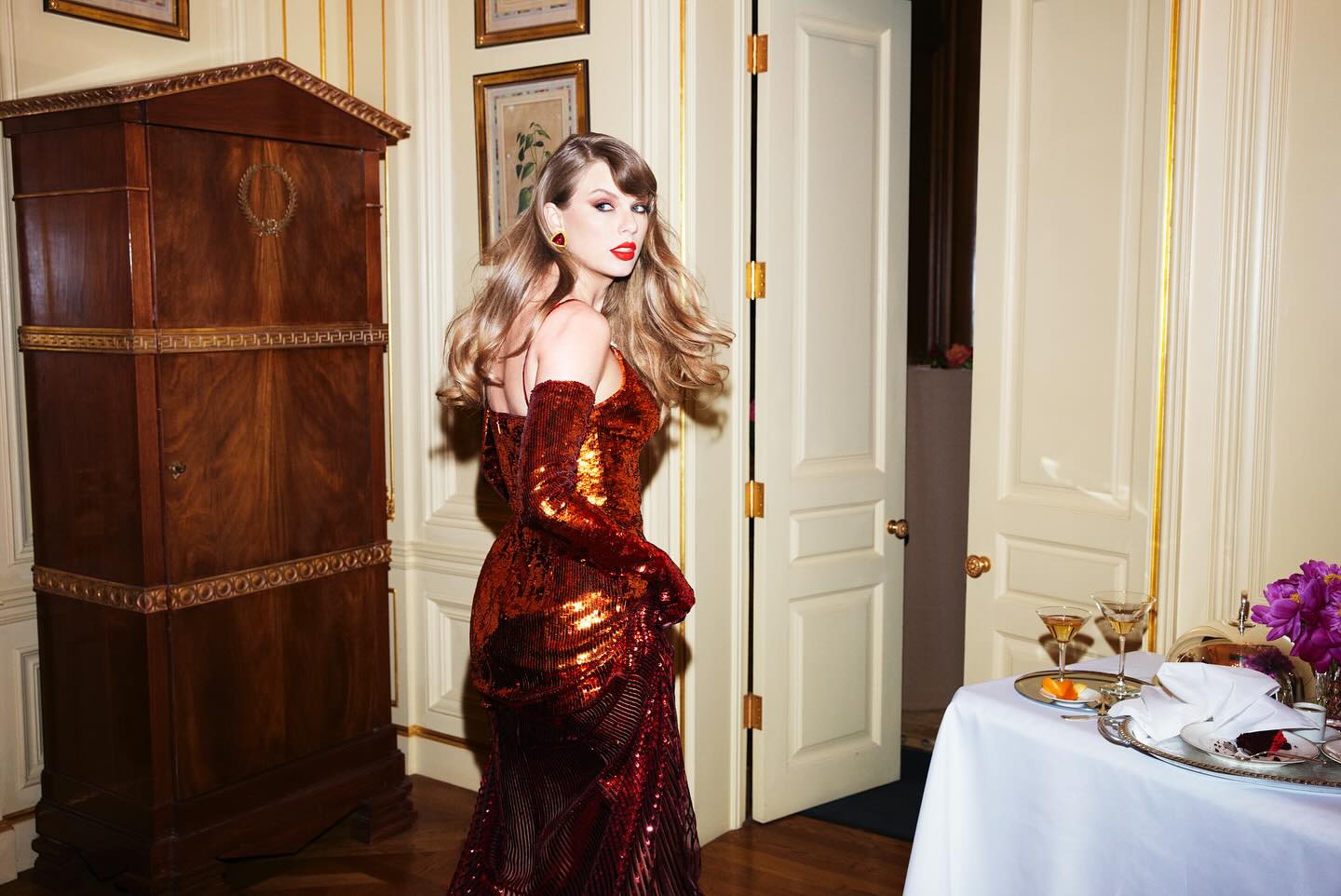
Taylor Swift wearing custom Gucci.
(Image credit: Mert Alas and Marcus Piggott)
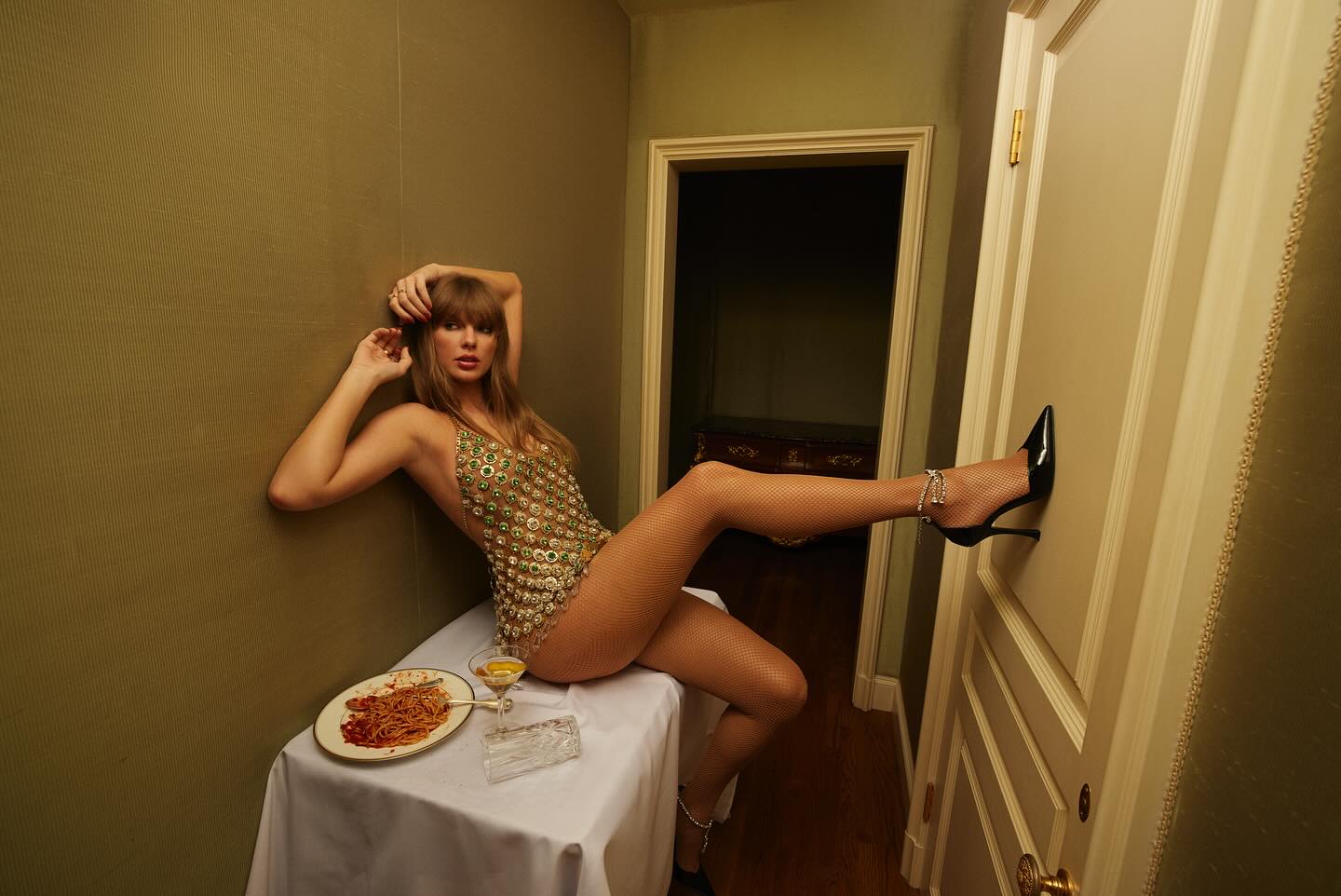
Taylor Swift wearing a Kelsey Randall chainmail dress.
(Image credit: Mert Alas and Marcus Piggott)
Swift has shape-shifted many times in her career, sonically and visually, with a new color palette and set of designers to accompany the mood of each album. When she debuts a new project, she often discusses her swerves—from country to pop, from verbose, diary-entry lyrics to tight lines and infectious hooks—as a response to feedback on the previous body of work. Just because it’s never quite in the same way doesn’t mean she’s ever stopped performing.
In The Life of a Showgirl, Swift admits that it hurts when she doesn’t get enough applause. “I have been afflicted by a terminal uniqueness,” she sings on “Eldest Daughter.” “I’ve been dying just from trying to seem cool.”
The fashion seen in the visuals reflects the 24/7 stage she lives on, with an audience that includes both her fans and her harshest critics. Everything is over-the-top and opulent, calibrated for stage lights or the snap of a camera. Being “authentic” or “relatable” isn’t the goal—just like the actual Eras Tour, the point, in the end, is putting on a show.
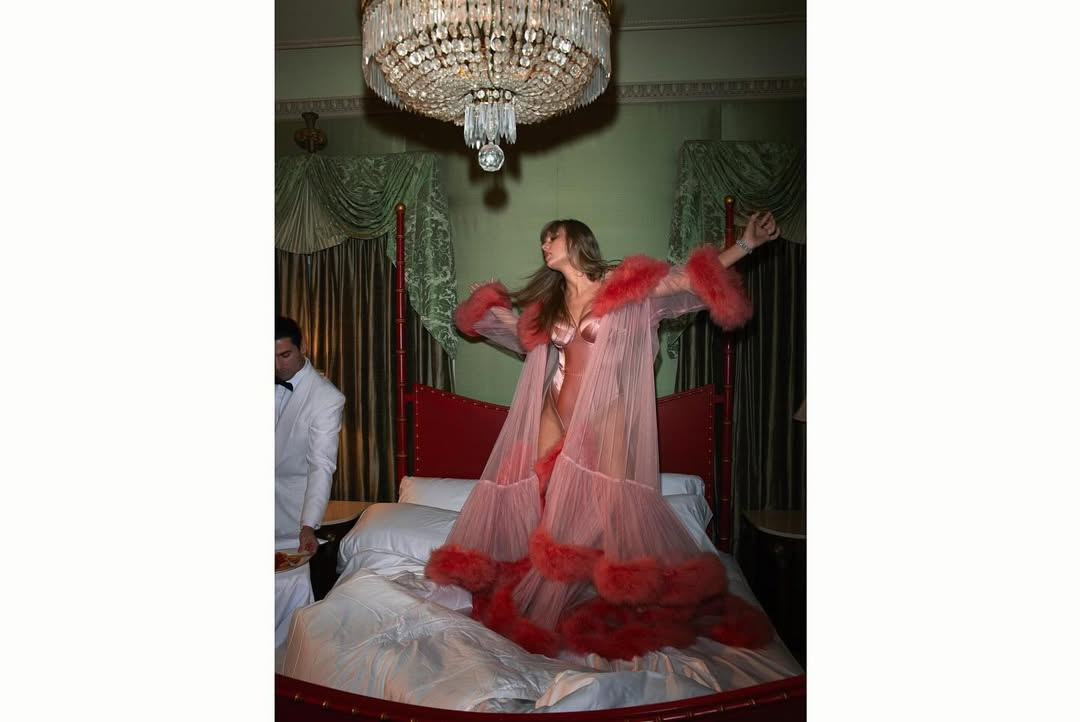
Taylor Swift wearing Fleur du Mal lingerie.
(Image credit: Mert Alas & Marcus Piggott)
Five years before putting on her Showgirl sequins, Swift surprise-dropped the indie-pop album folklore. The imagery—all woodsy florals and understated Dôen dresses—couldn’t have been more different from those of her current chapter. But the sentiment in one of her most emotional songs from it is consistent.
“I’ve never been a natural,” Swift sigh-sings on “Mirrorball,” a song she wrote during a period when she couldn’t tour due to the pandemic. “All I do is try, try, try.”
In the Showgirl era, Swift isn’t lamenting her dedication to her craft, like she did back in folklore. On this album and in its accompanying visuals, she’s proudly the opposite of effortless: The headdresses she wears weigh several pounds, and you can’t simply wear all those feathers and crystals and fringe—they require a precise posture to pull off. This is a wearable manifestation of all the work she poured into the Eras Tour, an event that even 250 pairs of custom Christian Louboutin heels couldn’t pass off as totally glamorous.
“Pain hidden by lipstick and lace,” is how she describes her life on the title track. In her Time Person of the Year profile, she recounted the “crunch” of her feet as she tiptoed through her hotel rooms after her three-hour performances. The life she lives is pure entertainment for us, but it’s hard work for her. In this moment, she’s dressing to remind us what we demand from our pop stars: a spectacle of the highest order.
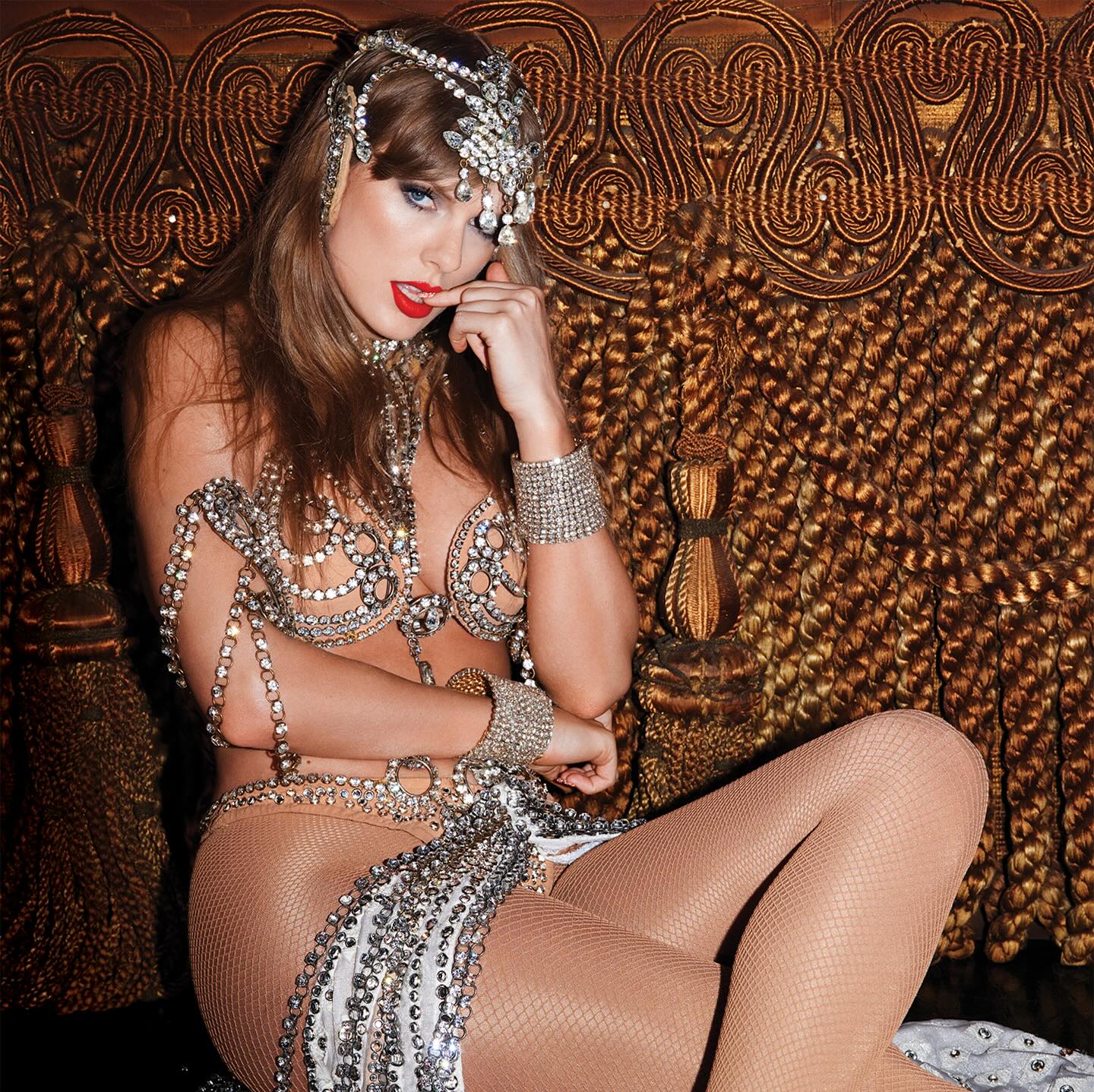
Taylor Swift wearing vintage Bob Mackie and custom Lorraine Schwartz bracelets.
(Image credit: Mert Alas and Marcus Piggott)
In another behind-the-scenes clip, Swift examines a playback of a dance sequence for “Ophelia” set in a dressing room, along with her Eras Tour dancers. She takes in her blood red, beaded corset and opera gloves, and the way they execute a tight segment of choreography, and is not quite satisfied with the performance.
“I have more to give,” she says, signaling to the team to re-set the shot once again. “I promise.”

